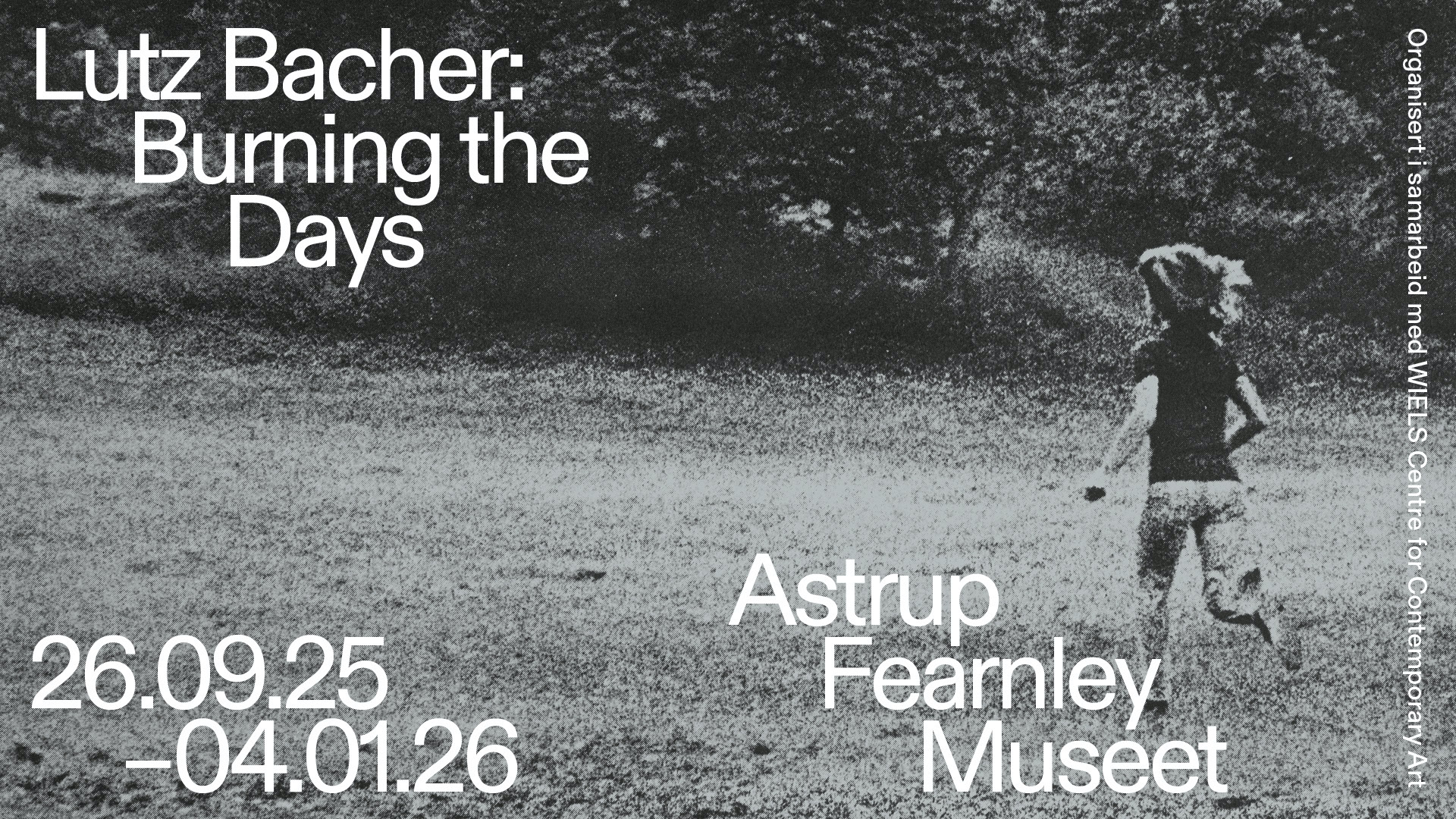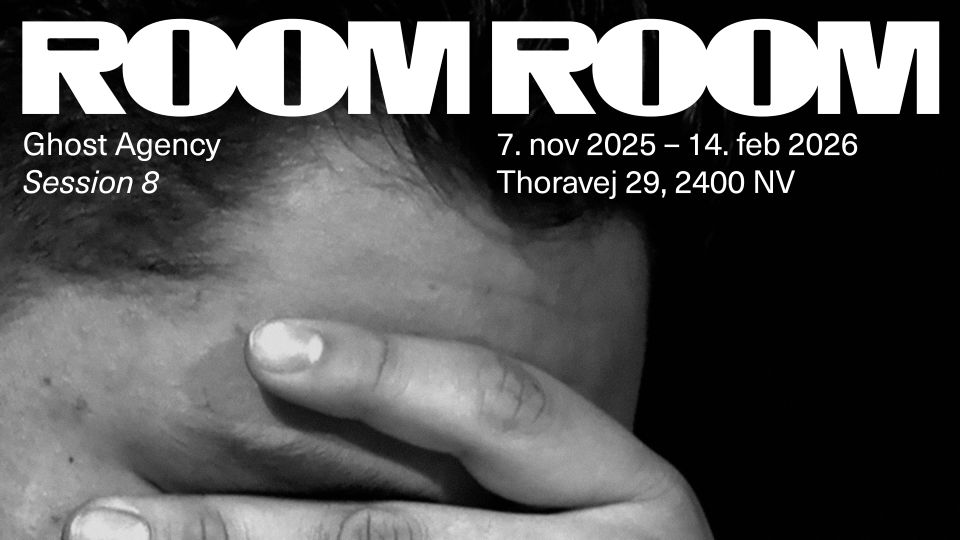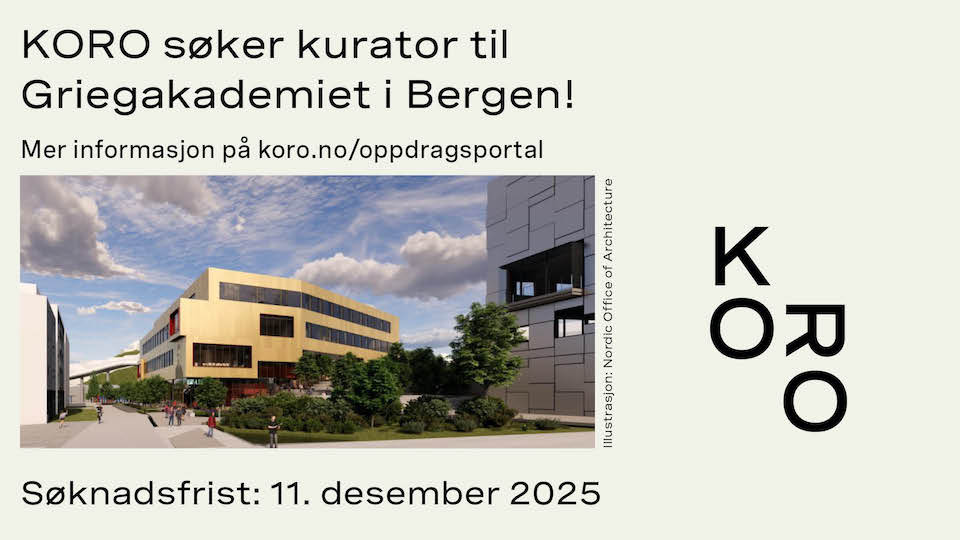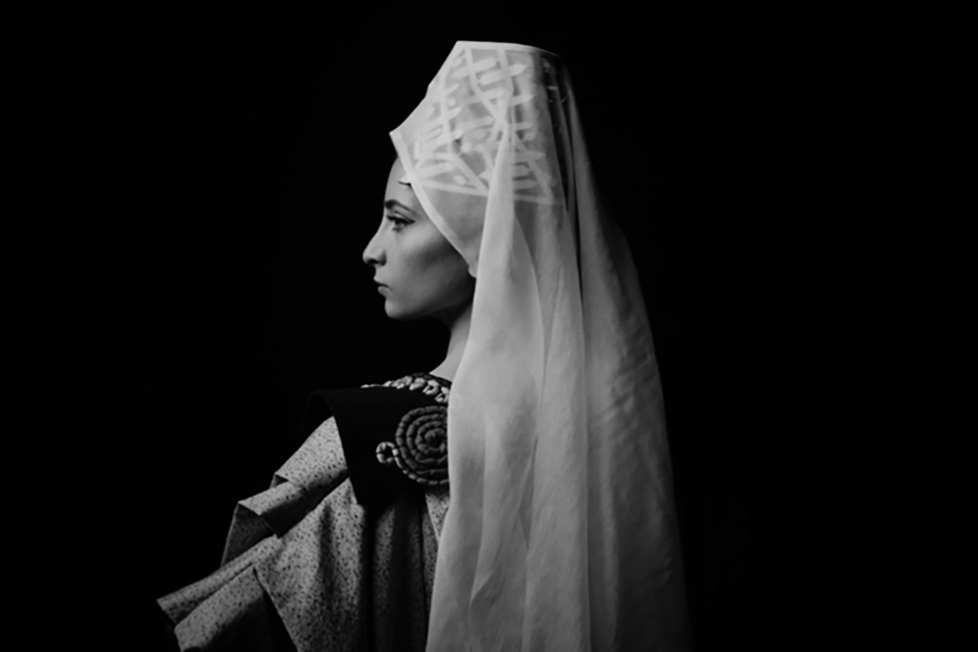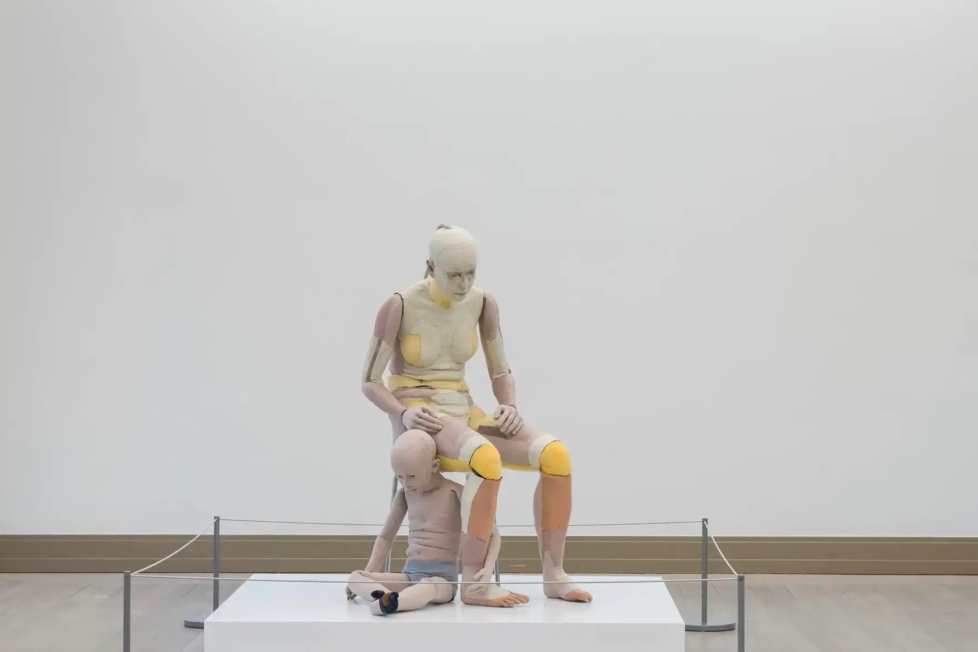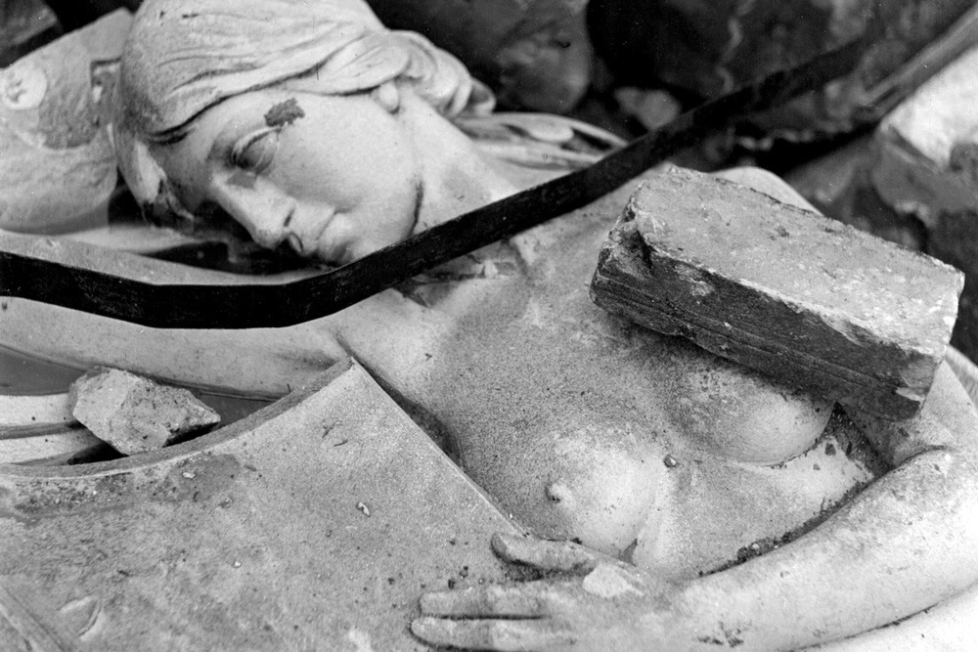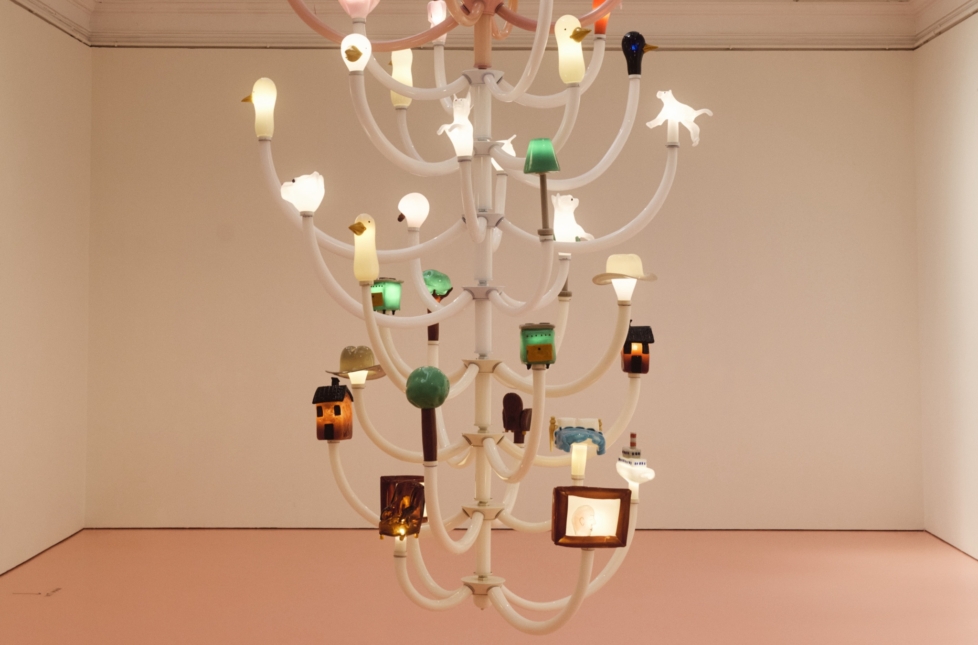
Optimism and kindness are central concerns in Valeria Montti Colque’s myth-infused practice. Why? Because the idea of community seems to be her main topic, paramount to everything else. At Bonniers Konsthall, she explores how art can be applied to real life in the encounter with the viewer: you’re meant to feel at home. Find a seed of liberation. Spiritual or collective, it doesn’t matter, as long as something lets up. Here, you will find everything you need to dream.
In the monumental Mamita Montaña (2024), Montti Colque translates the desire for community into an installation depicting a mother who doubles as a mountain, a piece that pretty much sums up her entire oeuvre. The sculpture’s huge body wears a dress draped with hundreds of metres of fabric. Her head shrouded behind a curtain of eggs, the mother stares straight ahead without a hint of warmth. Instead, intimacy is conveyed through the everyday objects and artworks that Montti Colque has incorporated in the body. Handmade teacups, pots, and rugs are displayed alongside images of saints and watercolours, all of which are designed to stimulate the imagination. Let your mind travel! Become a hero! See yourself in Swedish folk costumes or large floral Chilean ones – the personal will merge with the universal. A dream as naïve as it is necessary.

The exhibition Cosmonación – Modersberget (Mother Mountain) is a reworked version of the Chilean Pavilion at the 2024 Venice Biennale, which was praised for its redemptive maximalism. Montti Colque was a controversial choice by curator Andrea Pacheco González. As the first artist from the Chilean diaspora to represent Chile at the prestigious biennial, she symbolises an experience which the country has not come to terms with. Her dual position – born in Sweden in 1978 to parents who fled Pinochet’s coup – exposed an open wound in Chile’s public sphere.
The political tension is less prominent in Stockholm. Instead, a personal timeline running tenderly along the corridor into the galleries becomes an evocative introduction to Montti Colque’s oeuvre. It consists of second-hand pottery printed with family photographs: the artist as a child, her grandmother, the newly arrived parents. The wave formation of the plates appears minimalist against the white wall. It is the only work on view to explicitly address the artist’s family history.
By contrast, the twenty-metre-long collage Under Carlito’s Wings (2024), hanging on the opposite wall, features residential buildings from Stockholm’s Hökarängen district, seemingly bursting with creativity as Montti Colque’s imaginary characters peek from windows and balconies. The fact that Hökarängen is a prime example of the extreme gentrification taking place in the Swedish capital – where immigrants, the unemployed and families with poor credit ratings are pushed further and further out to the periphery – puts Montti Colque’s romanticisation of the home in a different light.


Ceramic works in the bright corner room deepen Montti Colque’s self-constructed mythology. They feature named figures in clay, sometimes fired and unglazed, sometimes full of strong pigments and glossy colours. Like the big sculptures, they are packed with maximalist detail. Embodiments of culture clashes? The whole thing is a jumble of references to different cultures, taking the form of ambiguous creatures. Almost alive, almost speaking. One face is screaming. Another is resting, embracing a bird. A third waits impatiently with a bunch of keys around its neck. Long titles like El Pescador Den lille drömmaren föddes där på höjden med inget kan stoppa hans blomstrande själ (El Pescador The Little Dreamer Was Born There on the Hilltop but Nothing Can Stop His Soul From Blossoming) (2025) indicate that the works carry specific characteristics that may at some point be activated elsewhere in a video work or a performance.
Unlabelled, untitled, and undated, large stakes lean against the walls of every room. These soothing, modernist wooden monoliths – dreamy, abstract, flat – surely have some practical function. Perhaps as signposts in a protest march? Their colours are often bright. In contrast to much else in the show, their reticence prevents the bare walls of the gallery from closing in. They rest in a shape that is not trying to say anything; they seem to just be.


Many of the works are the result of years of collaboration, sometimes spanning a lifetime. Montti Colque’s studio seems open to everyone. Family members, friends and strangers are part of a creative network whose social function often seems more important than the work itself. Paradoxically, the bridge between life and art is precisely what is missing here. Ever since Montti Colque graduated from the Royal Institute of Art in 2004, she has brought her lavish costumes to life through performances in which she and others have embodied the home-made mythology. But here, they remain un-activated, which seems to play down their crazy, wild, and humorous qualities.
In the video Snötäcke över blomstrande landskap (Flowering Landscape Covered in Snow, 2025), a group of characters dressed in costumes from the exhibition climb a mountain. The crisp winter landscape becomes a striking backdrop for the screeching assemblages frolicking in the snow. It’s beautiful, but too obvious. Why not let these wonderful creatures scurry around during rush hour at Stockholm Central Station? There, Montti Colque’s incurable optimism could have offered a tangible alternative to our hopeless reality.

